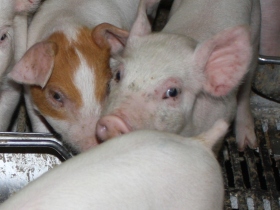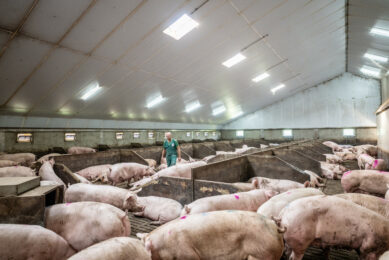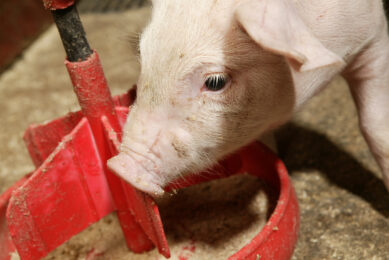Research: Piglet tail behaviour encourages tailbiting

In case piglets carry their tails between their legs, they often become the victims of tailbiting, Dutch research has revealed. Hence, pig farmers can take preventive action.
The findings, a study by Johan Zonderland, Wageningen University and Research Centre, the Netherlands, were published last month in the magazine Applied Animal Behaviour Science.
No tail docking
Zonderland observed nearly 1,000 weaner pigs – of four to 10 weeks old. Pig tails had not been docked and he recorded their positions.
Zonderland noticed that the tails were curled, pointed straight backwards, were wagging or were stuck between the hind legs. “In our previous study we had already noticed that pigs with curly tails virtually never had any damage. But there was always something with pigs with their tails between their legs.”
Quantification
Zonderland now quantified that observation. A quarter of the pigs seen to have their tails between their legs in two observations had serious wounds on their tails three days later. Bite marks from other pigs were found on 32% of these pigs. With their tail between their legs therefore heralds tail biting.
“Pigs already have the potential to bite, only you don’t yet see the effect on their tails,” said Zonderland.
Preventing an outbreak
In this way pig farmers can recognise and prevent an ‘outbreak’ of tailbiting. Even throwing handfuls of straw or a toy into the group of pigs twice a day can make a big difference, another of his studies showed.
“It is much more difficult to stop the tail biting once the tails are wounded and there is blood on them.”
This all works on the condition that the pig farmer should walk attentively through pig sheds at regular intervals, surveying the pigs’ behaviour and their tail positions. He admitted that this may not be easy in case 3,000 pigs or more are present on-farm.
There is, however, no alternative as no generally applicable cause of tail biting has yet been found.
Related website:
• Wageningen University and Research Centre











